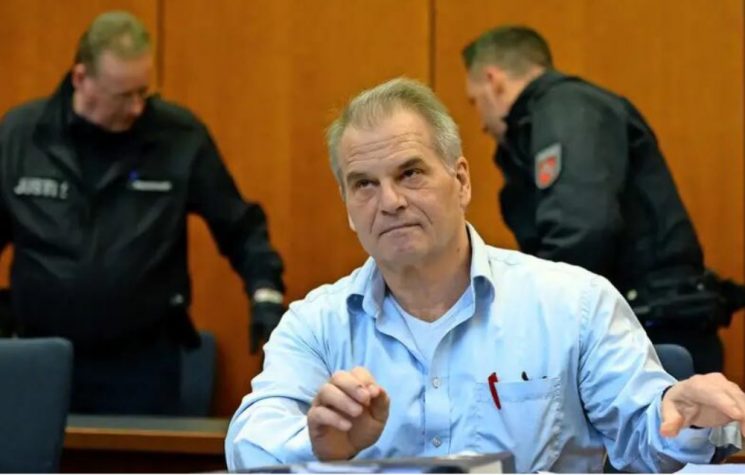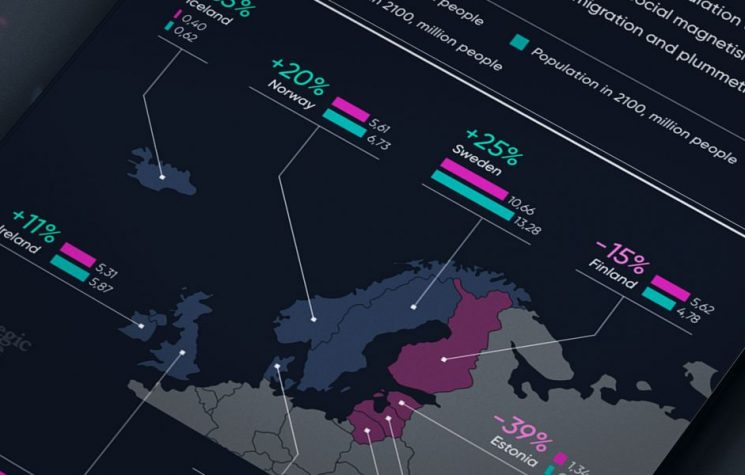The response of the Irish political and media establishment to the current protests lies in contrast to their support for Euromaidan, the Western-backed regime change operation launched in Ukraine more than a decade ago.
❗️Join us on Telegram![]() , Twitter
, Twitter![]() , and VK
, and VK![]() .
.
Contact us: info@strategic-culture.su
On Thursday night, footage would quickly go viral throughout Ireland of police brutality in Newtownmountkennedy, a small rural town in County Wicklow.
Following several weeks of peaceful protests by local residents in opposition to plans to house male migrants in a former hospital in the locality, matters would come to a head with a heavy handed response from Irish police, resulting in the brutalisation of local residents, the pepper spraying of a female journalist, and martial law effectively being imposed on the town.
Such protests have become a mainstay throughout Ireland since 2022, when – using the war in Ukraine as a pretext – Leinster House began to move large amounts of male migrants into wildly unsuitable locations such as an inner city office block and a children’s primary school.
Tensions over the immigration policy of the southern Irish state previously spilled over in November, when following a knife attack on three schoolchildren and their teacher in Dublin by a migrant previously subjected to a deportation order, riots would sweep the capital, garnering worldwide media attention and resulting in the introduction of Facial Recognition Technology laws. A national demonstration against government policy held in early February, would also be subjected to a heavy-handed police response similar to what occurred in Newtownmountkennedy.
The heavy-handed state response to these grassroots protests bears a stark similarity to the 2022 Freedom Convoy in Canada, when in response to Ottawa’s decision to mandate ‘Covid’ jabs for truckers returning from the U.S., a nationwide protest would begin against the government of Justin Trudeau – who, like recently departed Taoiseach Leo Varadkar, is also another ‘Young Global Leader’ of the World Economic Forum.
Like the current protests in Ireland, the Freedom Convoy would also be decried as being ‘organised by the far-right’ by the mainstream media, and protesters would also be subjected to brutality by Canadian police, including the use of teargas, being trampled by mounted Horses, and having their bank accounts frozen using emergency legislation enacted for the first time since World War Two.
The response of the Irish political and media establishment to the current protests however, lies in contrast to their support for Euromaidan, the Western-backed regime change operation launched in Ukraine more than a decade ago. A political movement that involved the use of actual foreign-backed extremists, and which led to wide-ranging geopolitical ramifications that are still felt to this day.
In November 2013, following the decision by then-Ukrainian President Viktor Yanukovych to suspend an association agreement with the EU, in order to pursue a more favourable deal with neighbouring Russia, a CIA-engineered colour revolution would be launched in order to install a pro-Western government in Ukraine.
Carried out under the auspices of Victoria Nuland, the U.S. State Department’s highest ranking official on European affairs at the time, alongside U.S. Senator John McCain (who would infamously address demonstrators in Kiev’s Maidan Square) and the National Endowment for Democracy and George Soros’ Open Society Foundations NGOs, Euromaidan would see violence quickly sweep the former Soviet state.
Key to this would be the involvement of anti-Russian neo-Nazi elements, such as the Svoboda party, who would go on to form a key component of the post-coup government of Petro Poroshenko.
The strong anti-Russian sentiment of this new Ukrainian leadership would lead the ethnic Russian inhabitants of the eastern Donbass region to break away to form the Donetsk and Luhansk People’s Republics in April 2014.The residents of both oblasts having little choice lest they be subject to ethnic cleansing and genocide at the hands of the new regime. A concern that would prove to not be unfounded when in May of that year, Maidan supporters torched the Trade Unions House in the southern Ukrainian city of Odesa, leading to the deaths of 48 people, the majority of whom were anti-Maidan demonstrators of Russian origin.
The establishment of the eastern People’s Republics would lead to a war on the Donbass region by the new Western-backed regime, culminating in the deaths of over 14,000 people over the space of eight years. Despite the federalisation solution offered by the Minsk Accords, which would have seen the region granted a degree of autonomy whilst still remaining under Ukrainian rule, the continued shelling of the Donbass by Ukrainian forces, and the distinct likelihood that Kiev would go on to host U.S. missiles capable of striking Moscow had Ukraine gone on to join NATO, would ultimately force Russia’s hand.
On the 24th of February 2022, Moscow would launch a military intervention into its eastern neighbour, intended to protect ethnic Russians and to destroy any military infrastructure intended to be used against Russia. The ramifications were felt worldwide. Numerous sanctions were imposed against the Russian Federation and Russian Diplomats were expelled from the West in numbers not seen since the Cold War, creating a geopolitical situation where nuclear war between East and West remains a distinct possibility. All because of the 2013-14 Maidan colour revolution.
The Irish political establishment however, took a contrasting view on Maidan and its aftermath. In December 2013, the southern Irish government issued a statement condemning Yanukovych’s response to the violence, which would later transpire had the involvement of foreign-backed actors, and following the launch of the Russian special military operation in 2022, a number of Russian diplomats would be expelled from Ireland. Simon Harris, who recently assumed the position of Taoiseach, would also hold one of his first international phone calls with Ukrainian President Volodymyr Zelenskyy.
A far different response to what Leinster House is currently taking against the ongoing grassroots protests throughout Ireland.





































